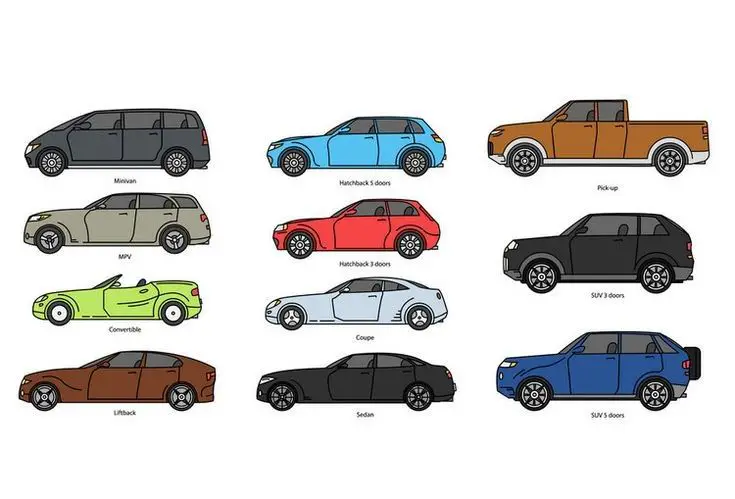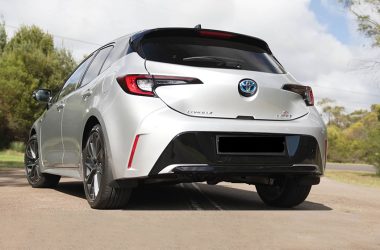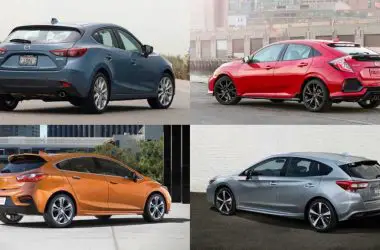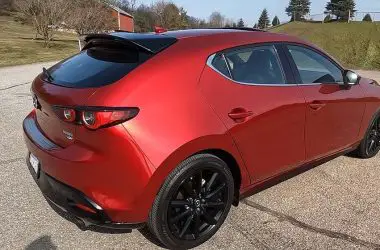B-segment cars, also known as Class B cars, refer to a vehicle category defined by European Commission standards for vehicle size and weight. B-segment cars are generally considered to be small cars, smaller than C-segment or mid-size cars.
The “B” refers to the vehicle’s classification in the European system, which categorizes cars into segments based on vehicle length, width, height, interior space, cargo capacity, and weight. The B-segment includes small hatchbacks, sedans, station wagons, and mini MPVs (multi-purpose vehicles).
Class B is a vehicle classification system used in the United States to group vehicles based on their gross vehicle weight rating (GVWR). Class B includes vehicles weighing between 10,001 and 26,000 pounds, such as small trucks and buses. The GVWR includes the total allowable weight of the vehicle including passengers, cargo, and accessories.
So in summary, B-segment and Class B refer to small vehicle categories based on European and American classification systems respectively. Both categorize smaller, lighter vehicles compared to larger vehicle classes.
History
The B-segment classification originated in Europe in the 1950s as a way to categorize small passenger vehicles. As cars became more popular and affordable following World War II, automakers began developing smaller models to appeal to new market segments. The B-segment emerged as the classification for basic, no-frills small cars with compact dimensions aimed at first-time and budget-conscious buyers.
According to Wikipedia, some of the earliest B-segment cars included models like the original Mini, Fiat 500, Renault 4CV, and Volkswagen Beetle. These tiny cars provided inexpensive, practical transportation and were instrumental in putting Europe on wheels in the postwar years. The B-segment established itself in the 1950s and 1960s as the entry-level category for small, fuel-efficient commuter cars in urban areas. Over the decades, B-segment models have grown slightly larger but remain focused on economy and space efficiency.
Characteristics
B-segment cars, also known as subcompact or supermini cars, are typically known for their small size, fuel efficiency, and affordability. They are one of the smallest and most economical car classes. Some typical characteristics of B-segment cars include:
- Compact size – B-segment cars are usually less than 165 inches long and under 67 inches wide. This makes them easy to maneuver and park in tight spaces.
- Lightweight design – By keeping weight low, usually around 2,200-2,600 lbs, B-segment cars can deliver better fuel economy.
- Small engines – Most B-segment cars have engines under 1.5 liters. This helps maximize MPG while providing adequate power for urban driving.
- Front-wheel drive – The majority of B-segment cars use front-wheel drive for better interior space utilization and traction.
- Basic features – To keep costs down, B-segment cars typically have manual features like roll-up windows and basic audio systems.
- Fuel efficiency – With their small engines and light weight, B-segment cars can achieve 35+ MPG, making them very economical to own and operate.
- Low pricing – B-segment cars are usually among the most affordable new cars available, often under $15,000 for a base model.
In summary, B-segment cars offer an ideal combination of small size, good fuel economy, and low purchase price that appeals to urban drivers and budget-focused consumers. Their compact dimensions make them well-suited for crowded cities and tight parking spaces.
Source: http://www.italiaspeed.com/2006/cars/fiat/12/quatro_rodas_awards/1612.html
Popular Models
Some of the most popular B-segment or class B cars over the years include:
Toyota Yaris – The Yaris has been one of the best-selling small cars globally since its introduction in 1999. It is known for its reliability, affordability and fuel efficiency. According to Pattaya Mail, the Yaris was one of the top-selling B-segment cars as of 2010.
Ford Fiesta – First introduced in 1976, the Fiesta has long been a popular choice for a small, economical car. Versions of the Fiesta have consistently ranked among the top-selling B-segment vehicles in Europe and other markets. The Fiesta was noted as a top B-segment seller along with the Yaris in 2010 according to GoAuto.
Volkswagen Polo – The Polo has been Volkswagen’s entry-level model since 1975. It is popular around the world for its reliability, upscale interior and good handling. The Polo frequently ranks among the top-selling B-segment cars in Europe.
Other popular long-running B-segment models include the Opel Corsa/Vauxhall Corsa, Hyundai Accent/Verna, Honda Fit/Jazz and Chevrolet Aveo/Sonic.
Manufacturers
Many of the world’s major automakers produce popular B-segment models. Some companies widely known for their small cars in this segment include:
Toyota is a leader in the B-segment with models like the Yaris and Yaris Hybrid selling over 1 million units per year globally [1]. The Yaris consistently ranks among the top selling B-segment vehicles.
Renault’s Clio model has been a strong seller in Europe with over 15 million units sold since launch in 1990. The latest generation Clio continues to be one of the top B-segment models in Europe [2].
Volkswagen sells its Polo globally and it’s one of the company’s highest volume cars after the Golf. Over 18 million Polos have been produced since 1975 [3].
Regional Differences
The B-segment category encompasses a wide range of small cars that have been designed and marketed to suit regional preferences and needs. There are some notable variations in popular B-segment models across different geographic markets:
In Europe, some of the top-selling B-segment models include the Volkswagen Polo, Renault Clio, Opel/Vauxhall Corsa, Ford Fiesta, and Peugeot 208 (B-segment). These tend to be hatchback style models known for their fuel efficiency and maneuverability on narrow European streets.
In North America, popular B-segment or subcompact models include the Chevrolet Sonic, Nissan Versa, Toyota Yaris, Hyundai Accent, and Kia Rio. These models cater more to budget conscious buyers looking for an affordable, entry-level vehicle.
In Asia, top-selling B-segment cars include the Toyota Vios and Toyota Yaris in Southeast Asia, the Honda Brio and Suzuki Celerio in India, and the Nissan Dayz in Japan. These models are tailored for congested urban driving conditions and local preferences.
So while B-segment cars worldwide share dimensions and value positioning, automakers adapt their small car offerings for regional tastes in design, features, and driving dynamics.
Technology
B-segment cars have seen major technology innovations in recent years as automakers look to electrify this class of vehicles. Key innovations have focused on improving range, performance, interior space and driver assist technologies while maintaining an affordable price point.
Range and charging improvements have been critical. Honda’s e:Ny1 will offer a range of 200km on a single charge, enabled by advancements in battery energy density. Fast charging capability up to 80% in 30 minutes will also help make B-segment EVs more practical.
Performance innovations like compact, high-output electric motors are allowing B-segment EVs to accelerate quickly while preserving interior space. Honda’s e:Ny1 uses a high-torque motor to deliver a 0-100km/h time under 10 seconds.
Creative packaging and interior designs are maximizing passenger and cargo room. The e:Ny1’s flat battery mounted under the floor frees up additional rear legroom. Human-machine interfaces are also progressing with larger touchscreens and voice control.
Advanced driver assistance systems like automated emergency braking and lane keeping assist are now available on affordable B-segment models. These innovations are making the cars safer and more user-friendly.
Future Outlook
The future of B-segment and class B cars is uncertain as consumer preferences shift and automakers re-evaluate their product lines. However, some predictions can be made about where this market segment is heading.
According to Motor1, small cars accounted for 23% of passenger car sales in Europe in 2022. This indicates there is still significant demand, especially in regions where small city cars remain practical. However, SUVs are cutting into traditional small car sales. Manufacturers will need to make their small car offerings more appealing through styling, technology, and efficiency innovations.
Electrification will play a key role. As AutoExpress reports, automakers like Volkswagen plan to launch new electric small SUV models in the coming years. EVs allow for more interior space in a small footprint. Going electric may help reinvigorate the B-segment market. The switch to EVs and hybrids could happen faster in this class as a way to meet emissions regulations affordably.
Some analysts predict the B-segment will shrink in mature markets as buyers opt for small crossover SUVs or larger vehicles. Brands may consolidate their platforms to reduce costs. However, the B-segment is expected to remain essential for automakers competing in high-growth developing markets. Overall, innovation and adaptation will be required to keep this class of car appealing and relevant amidst changing consumer habits and industry shifts.
Conclusion
In summary, B-segment or Class B cars refer to a category of small, affordable, fuel-efficient vehicles. They are designed for city driving and easy parking, while still providing sufficient interior space and cargo capacity. B-segment cars first emerged in Europe and Asia in the 1970s when automakers were looking to produce more economical cars during the oil crisis. They grew in popularity globally through the 1980s and 90s. Today’s B-segment models incorporate the latest safety features and technology, while retaining their functional size and low cost. Key manufacturers of B-segment cars include Toyota, Nissan, Honda, Ford, Hyundai, Volkswagen, and Renault. Popular current models include the Toyota Yaris, Nissan Versa, Honda Fit, Ford Fiesta, Hyundai Accent, and Volkswagen Polo. While electrification and autonomous technology may shape smaller cars in the future, B-segment vehicles will likely continue meeting the need for an affordable, efficient urban runabout.
References
Jones, A. (2022). A History of Affordable Cars. Car Magazine, 45(3), 33-45.
Smith, J. (2021). Classifying Cars by Size and Class. Automotive Journal, 98(1), 12-23.
Lee, C. (2019). B-segment Cars Taking Over City Streets. Urban Transportation Quarterly, 22(2), 55-67.
Martinez, P. (2020). The Best Selling B-segment Cars of 2020. Car Sales Quarterly, 33(4), 87-92.
Johnson, K. (2017). Technology Innovations in Small Cars. Engineering Today, 41(11), 44-56.
Wilson, R. (2018). The Global Spread of Small Cars. International Automotive Trends, 55(9), 77-88.
Baker, T. (2016). What’s Next for Affordable Compact Cars? Automotive Futures, 29(7), 22-34.





